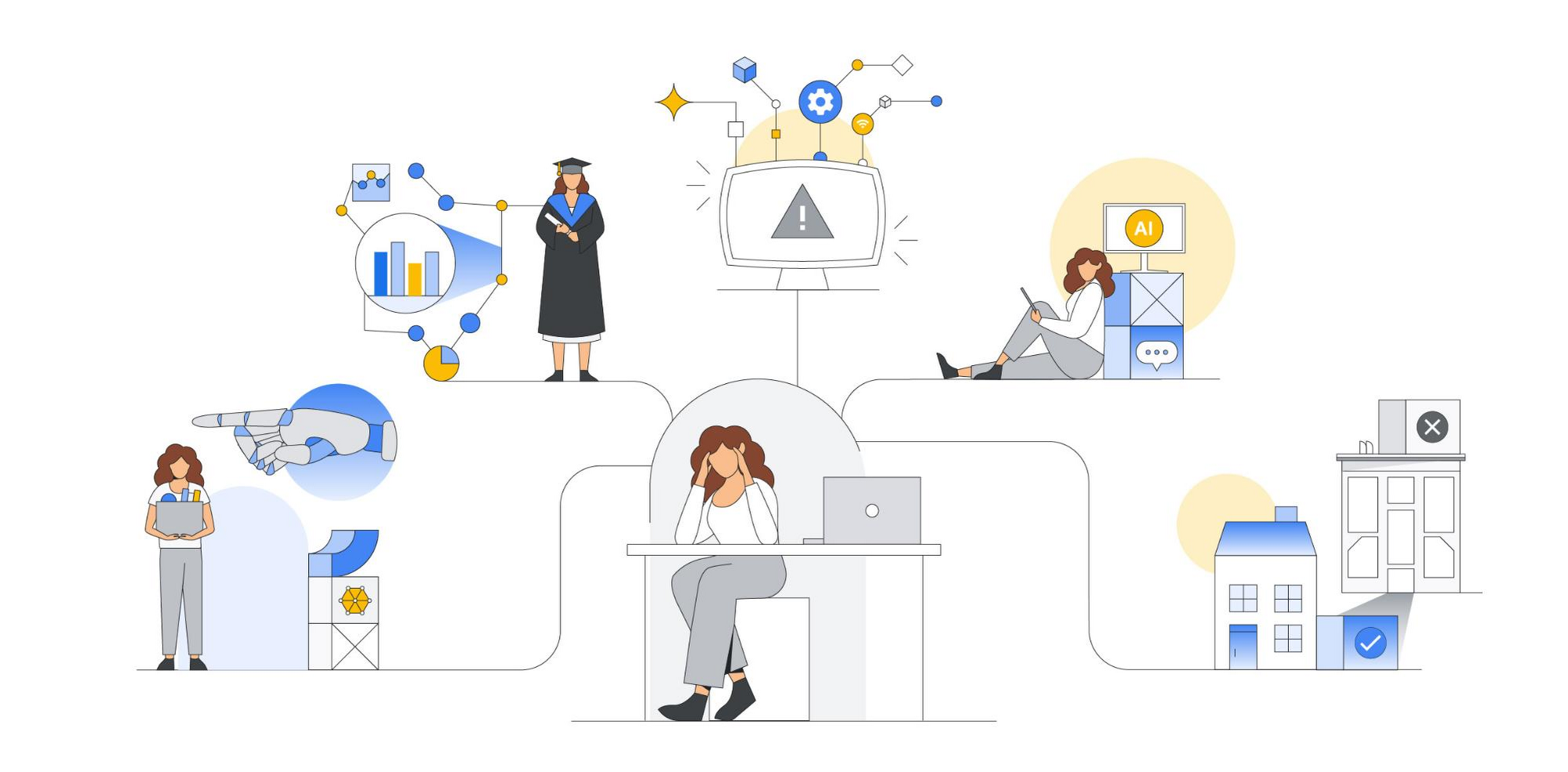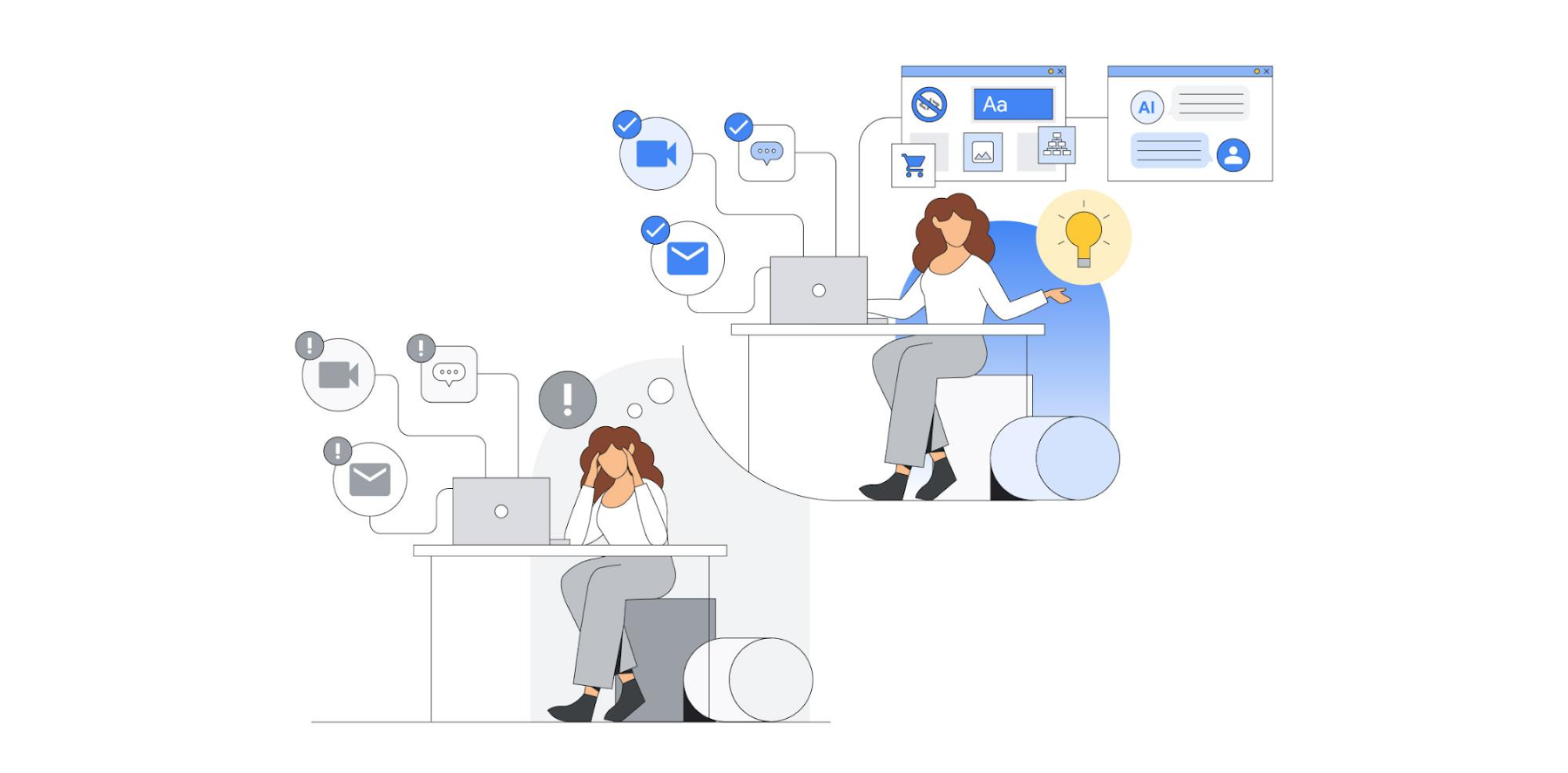AI in software development: What you need to know

Priyanka Vergadia
Staff Developer Advocate, Google Cloud
It is amazing how much technology has evolved over the years and continues to do so. AI is no exception to this trend, and it is exciting to see how it can assist us in various ways. There is no denying that many of us using AI have intentionally or unknowingly benefited from it over the past decade.
Regardless of where you are on your AI journey, there are many myths circulating about the role AI will play in our future work lives. Still, no matter your role in the tech stack, the promising reality is that AI is likely to make our lives easier and work more efficient.
In this blog, we are going to walk through a few of the myths floating around related to AI and our future.
Myth: AI will take over all technical jobs.
Reality: AI may automate certain tedious tasks in technical fields, but AI can not replace the creativity, intuition, and problem-solving abilities of human developers.
Today and more heavily in the future, technical job roles will leverage to assist developers and reduce developer toil. AI will help automate tedious and repetitive tasks, such as code reviews, testing, and debugging, which can minimize the time developers spend on these tasks while simultaneously allowing them to focus on more meaningful and innovative work. Overall, this can lead to faster development cycles and better quality software.
Moreover, the development of AI itself requires human input, including data scientists, machine learning engineers, and software developers. AI is a tool that can enhance human capabilities and helps them to be more efficient and productive in their work.
No doubt jobs will shift, as they always have. But these AI technologies will complement many jobs and create entirely new jobs we can’t imagine today.
Myth: Only data science experts can use AI.
Reality: While an understanding of data science is useful, you can use pre-trained models, or even experiences powered by AI, without understanding a lick about ML.
The myth that one needs to have a deep understanding of data science to take advantage of AI can be intimidating for those unfamiliar with the field. While understanding the basics of data science can certainly be helpful, it's not necessary to take advantage of AI in many cases.
One example is pre-trained models, which are models that have already been trained on large amounts of data and are ready to be used for specific tasks, such as classifying images or translating languages1. These pre-trained models can be accessed through APIs and used to power experiences or applications without any knowledge of data science or machine learning required2.
Another example is AI-powered experiences, such as voice assistants or chatbots, that use natural language processing to understand and respond to user input. These experiences are typically powered by pre-trained models and can be integrated into applications without requiring any knowledge of machine learning3.
However, it's important to note that while it's possible to use AI without understanding data science, having a basic understanding of the field can make it easier to understand the limitations and potential biases of AI-powered solutions.
Myth: Training custom AI models is too expensive and resource intensive.
Reality: You can customize a pre-trained foundation model
We all know that training a machine learning model can be very resource intensive. It requires a lot of data, computing power, and time which will be a barrier for people who want to train their own models, but don't have the resources to do so.
There are a number of ways to customize an already-trained foundation model. This can be a good option for people who want to use machine learning, but do not have the resources to train their own models. These uber-models are pre-trained on massive amounts of data and can be fine-tuned to perform specific tasks or cater to specific industries. By fine-tuning a pre-trained model, you can take advantage of the benefits of the original training while tailoring the model to your specific needs.
Another option is to use cloud-based machine learning platforms that offer scalable infrastructure and pre-built tools and frameworks for model development. These platforms can help reduce the computational burden of training your own models and provide access to pre-trained models and APIs.
Myth: AI is just another hype-y technology trend.
Reality: Don’t get left behind!
Unlike the revolving door of much hyped technologies over the past five years, AI is already proving to have an impact on many industries and will likely continue to do so in the future. AI is a disruptive technology that is already transforming businesses and industries by enabling automation, improving decision-making, and unlocking new insights from data. AI-powered solutions are being used in healthcare, finance, manufacturing, transportation, and many other fields, and the use of AI applications is only expected to grow.
Beyond the potential benefits, there are also potential risks associated with AI, such as job displacement, bias, and privacy concerns.
Even for those not in the technical field, AI can provide new job opportunities. Emerging roles like the Prompt Engineer will become increasingly important as the ability of the user to create a “good prompt” that is clear, concise, and easy to understand. It should also be specific enough to elicit the desired output, but not so specific that it limits the creativity of the language model.
Waiting out AI is not a practical or wise approach. Instead, individuals and businesses should stay informed about the latest developments in AI and explore potential applications in their fields. Beyond career related benefits of AI, it can also improve your personal life by providing commute optimization, home automation or even personal finance recommendations to help you save money4.
Myth: No code/low code AI platforms are only for non technical users.
Reality: No code/low code platforms help bridge the gap between technical and non-technical users
One of the biggest benefits of no code/low code AI platforms is that they make it possible for anyone to build AI applications—think chatbots, or specialized search—regardless of their technical skills. These platforms can help bring technical and non-technical users closer together by empowering both groups to participate in the software development process. Non-technical users can create simple applications using visual interfaces and pre-built components, while technical users can customize these applications and integrate them with other systems.
Additionally, no code/low code platforms can also be useful for technical users, especially those who want to focus on higher-level tasks rather than getting bogged down in the details of coding. For example, a data scientist might use a no code/low code platform to quickly prototype a machine learning model without having to write code from scratch.
No code/low code platforms are extremely powerful and can be used for a wide range of applications, from simple forms and workflows to more complex applications that require data integration, machine learning, and other advanced features. This makes them a valuable tool for organizations of all sizes and industries to benefit from AI without hiring expensive AI developers, enabling both technical and non-technical users to contribute in the software development process, streamline business processes, and accelerate innovation.


AI still needs a human touch
AI is a powerful tool that can be used to make many different technical and non-technical tasks more efficient. However, it is important to remember that it’s not a replacement for human creativity and ingenuity. AI can help us generate ideas, but it is up to us to decide how to use them.
For example, I actually used AI to help me develop and write this blog, including brainstorming ideas on where to start and how to structure my content. This allowed me to write faster and keep my thoughts organized, but AI did not (and could not) capture my creativity or unique perspective that is needed to make this content relatable and engaging for the right audience. All in all, the reality is that it continues to be up to humans to help AI do its job better.
Interested in learning more about AI? Check out our Generative AI learning path to learn more about the fundamentals of Large Language Models and to how to create and deploy generative AI solutions on Google Cloud.
1. VertexAI
2. Vertex AI API
3. Conversational AI
4. The 10 Best Examples Of How AI Is Already Used In Our Everyday Life



